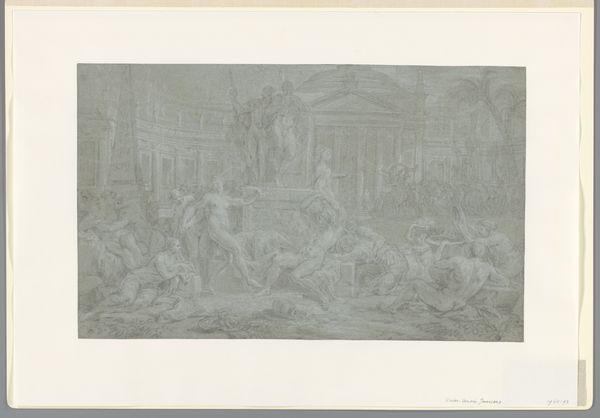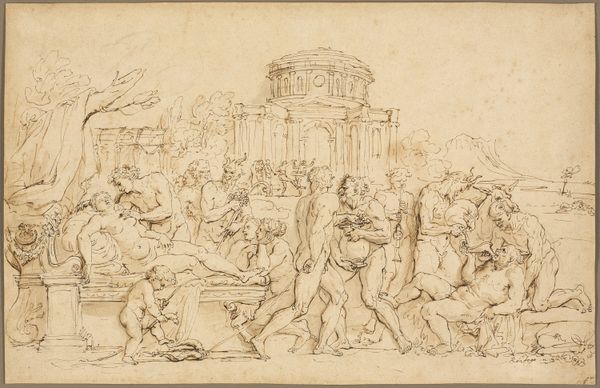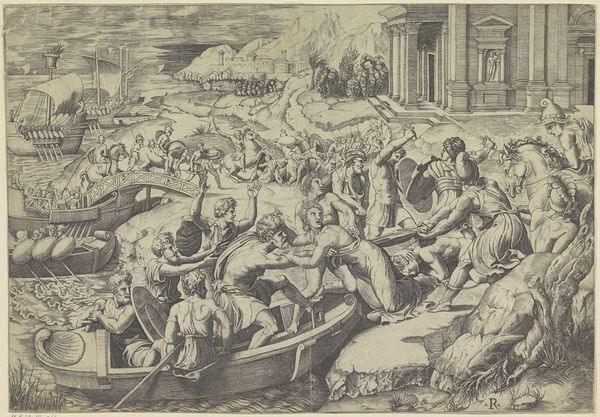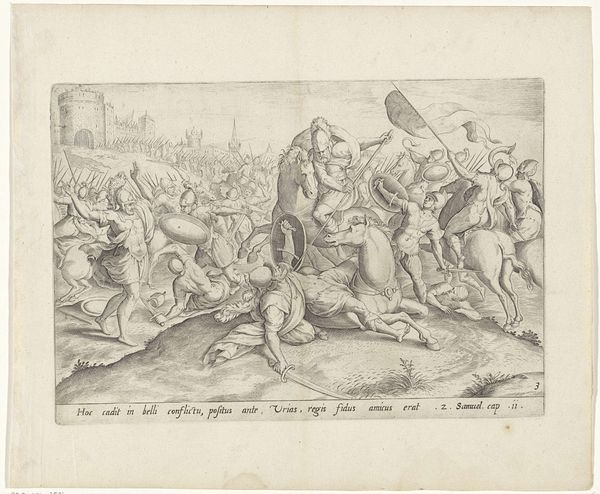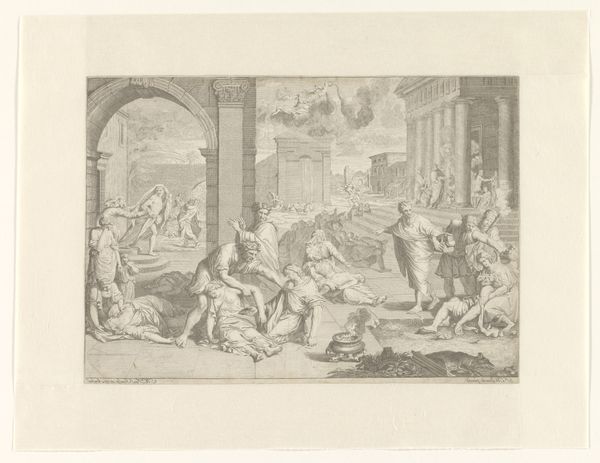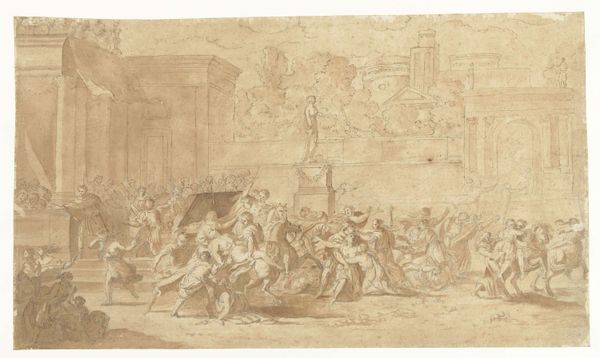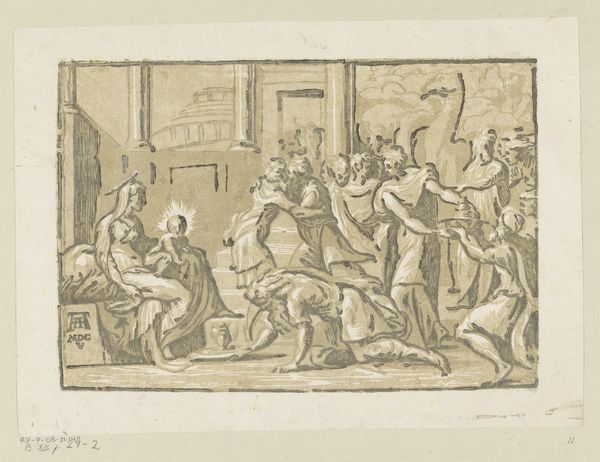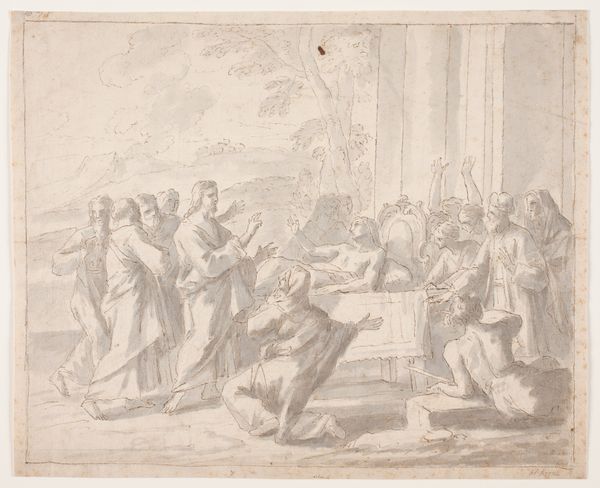
drawing, pencil
#
drawing
#
figuration
#
pencil
#
history-painting
#
academic-art
Copyright: Public domain
Curator: What strikes me immediately is the feeling of overwhelming chaos and violence in this drawing. The figures are so densely packed, their limbs intertwined in what looks like a desperate struggle. Editor: This is "The Rape of the Sabine Women" by Vincenzo Camuccini, created in 1820 using pencil on paper. The scene illustrates the legendary abduction of women from the Sabine tribe by the founders of Rome. Camuccini, as a prominent figure of the Neoclassical movement, would have been very deliberate about every line and element presented. Curator: It’s hard to ignore the charged symbolism, especially when viewing it through today’s lens. The image presents a founding myth of Rome that relies on the sexual assault and forced assimilation of women. I find it unsettling how such narratives get naturalized in the bedrock of Western civilization and how these scenes became celebrated tropes in art history. It’s difficult to disassociate that legacy. Editor: That's precisely where it gets interesting! Remember that in Roman mythology, this act led to the fusion of two cultures and the eventual prosperity of Rome. Look how the women are rendered, there’s struggle and desperation but, interestingly, the figures almost have an idealized aesthetic quality. In that way, the symbol is very much about power, and assimilation over explicit horror, and this carries meaning related to historical narrative over a span of centuries. Curator: I agree; Camuccini doesn’t shy away from showing conflict. The architecture is a recognizable backdrop and, indeed, seems deliberately arranged to frame this historical narrative. You cannot see "history" outside of the figures caught in that narrative. What's absent from these stories, usually, are the female voices of that time and the full experience, but it still resonates and echoes in discussions of gender politics. Editor: And, how interesting to consider that an image of brutal origin is visually turned into a representation of nation building. Perhaps in grappling with this piece, we can better discern some cultural underpinnings as well as appreciate the enduring power of symbols in shaping history, narratives, and our own perceptions. Curator: It is not simply an echo of the past, it is how power has been and is expressed, and those things certainly echo forward and resonate, indeed.
Comments
No comments
Be the first to comment and join the conversation on the ultimate creative platform.
